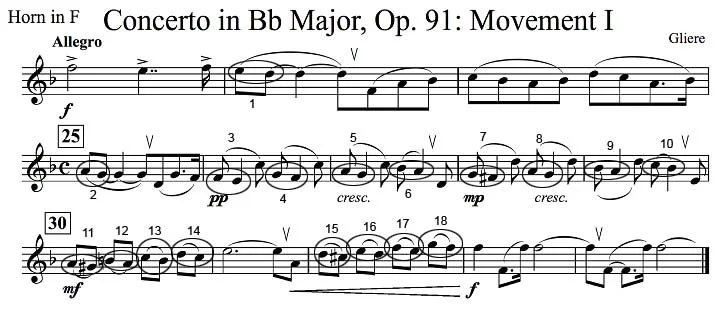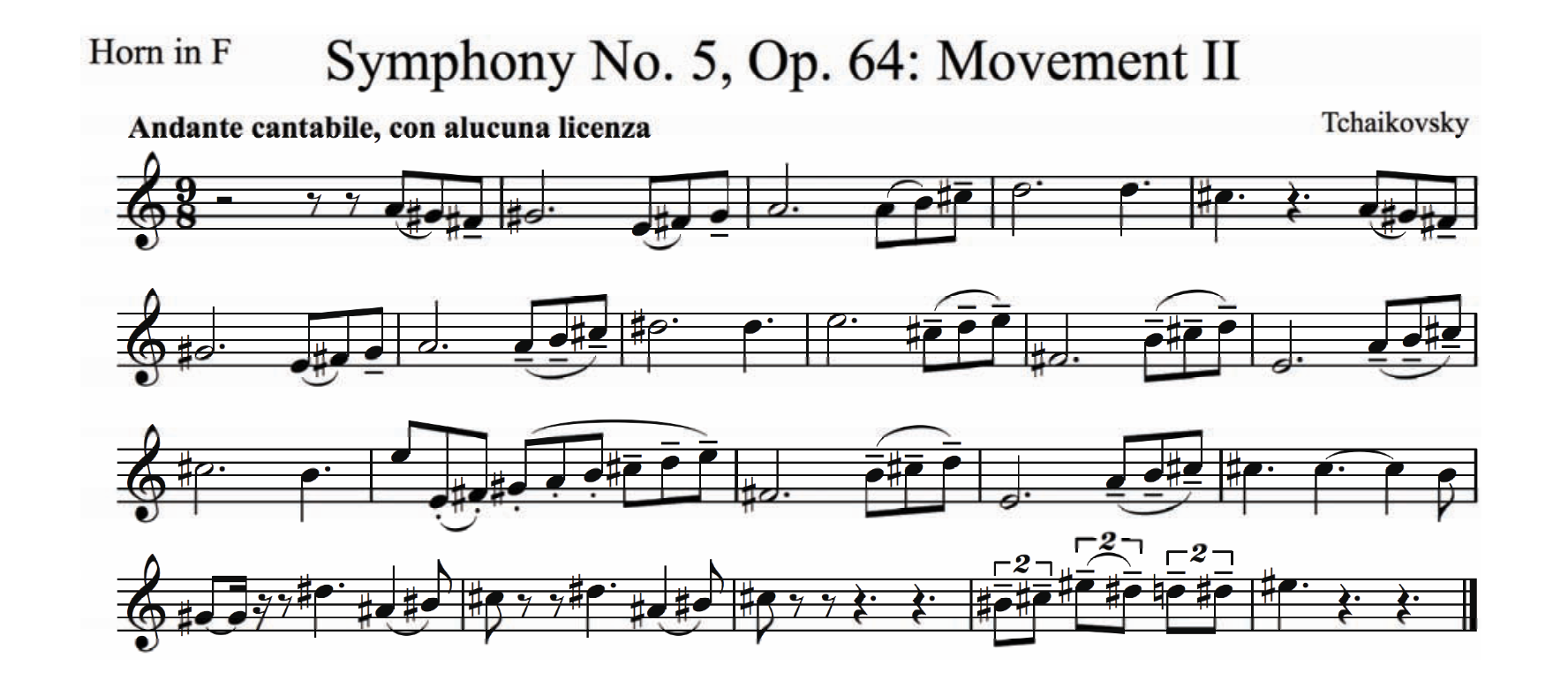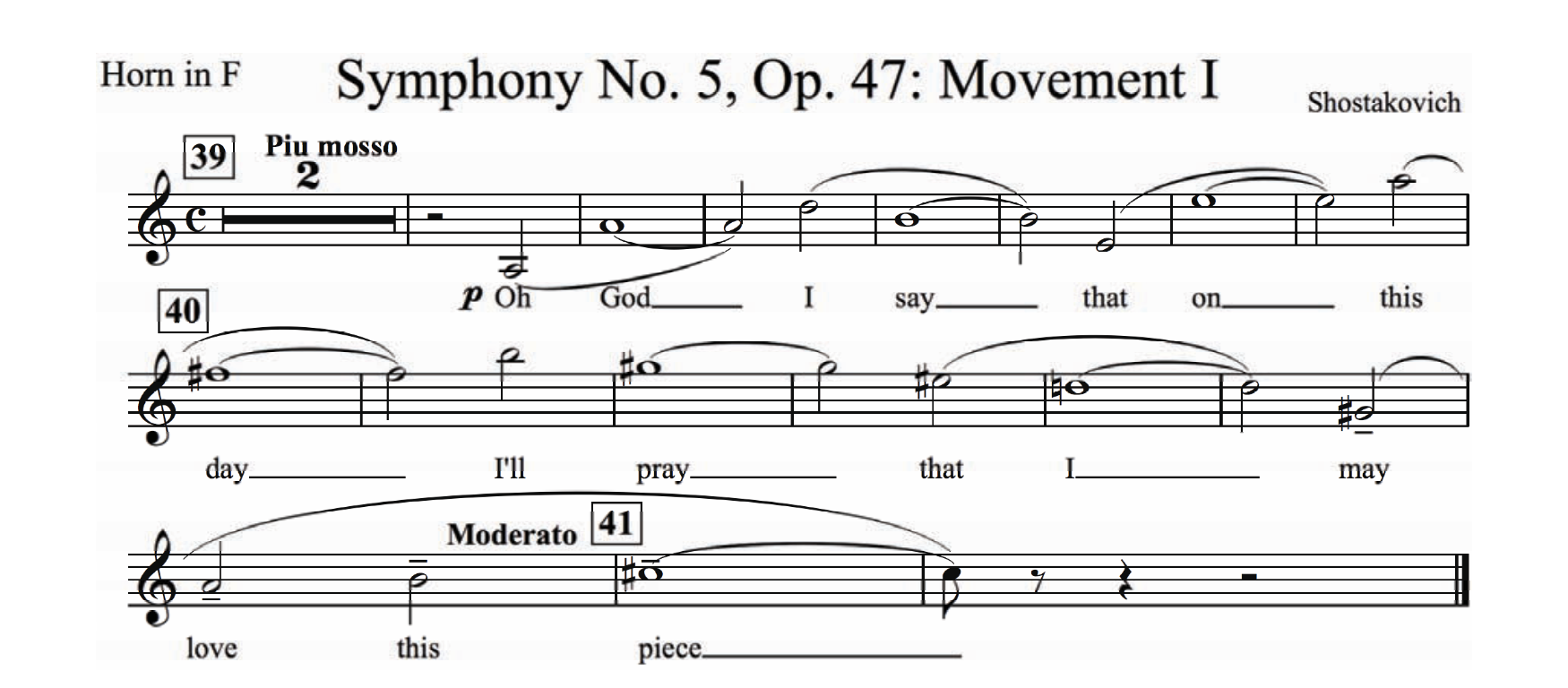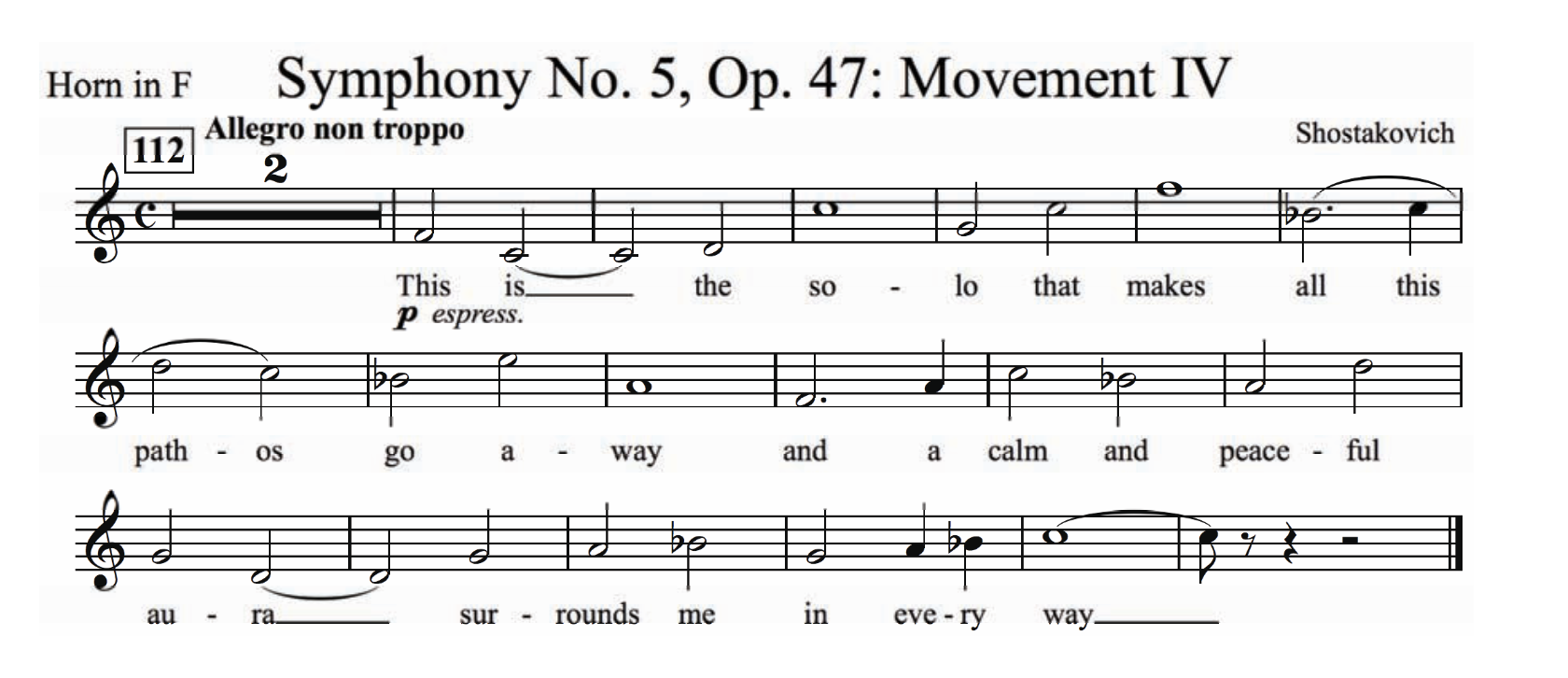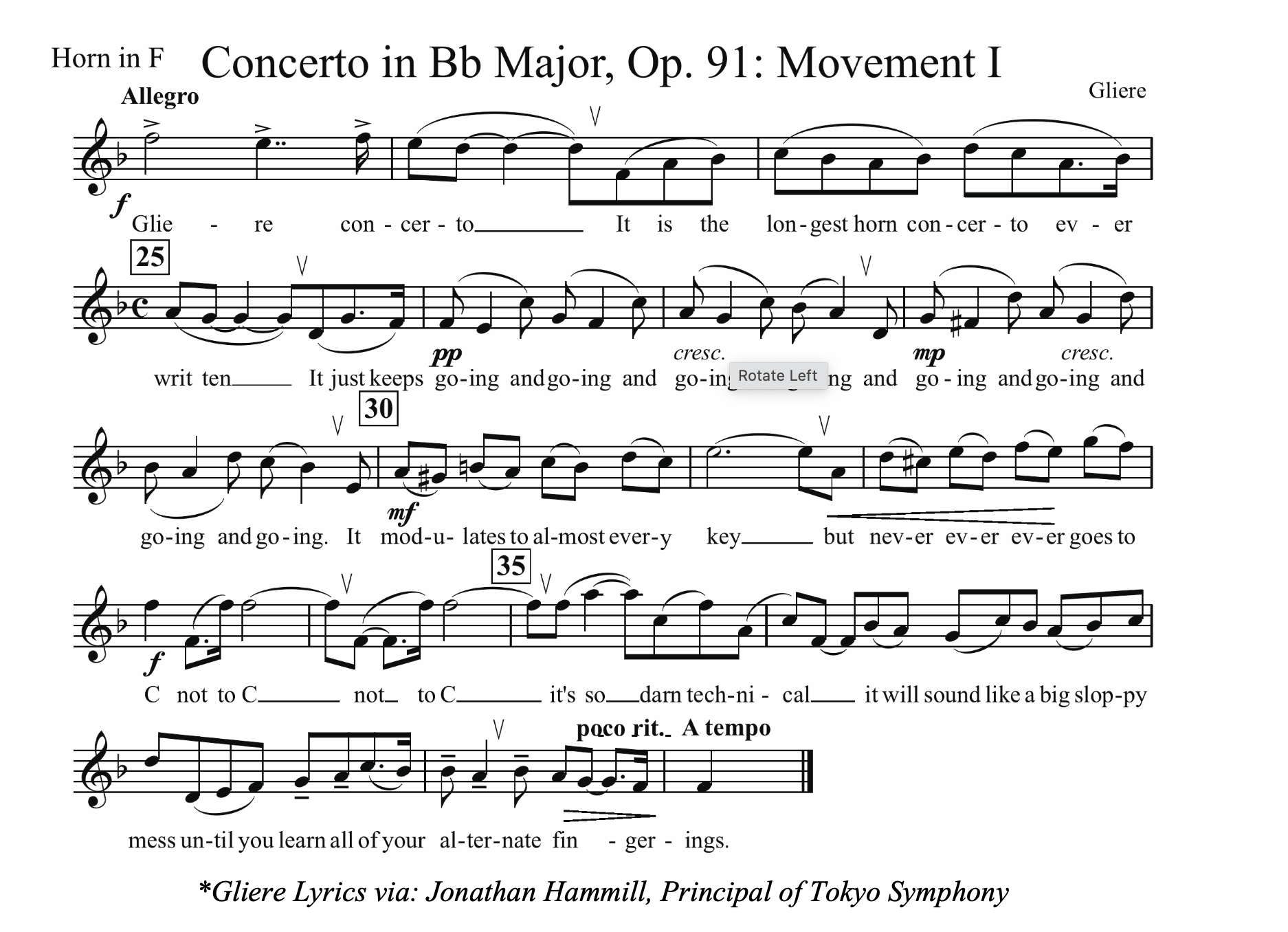Tchaikovsky's Fifth Sing-Along
Ideas, Lyrics, and Teaching Method by: David Krehbiel, Co-written by: Annie Bosler for the International Horn Society’s The Horn Call (May 2010)
I have often said jokingly that someone should make an alarm clock for horn players that would sound the first few bars of the strings from the second movement of Tchaikovsky’s Fifth Symphony. I am sure that most of us would wake instantly with blood pressure spiking, eyes wide, and heart pounding - ready for action.
Early in my career, hearing the introduction to the second movement quickly raised my heartbeat and anxiety level. However, I learned to calm myself by honing in on the heartfelt mood set by the opening bars. Focusing on the gentle murmur of the strings allowed me to tap into the emotional content of the music. By really listening to the opening, I could play with heart rather than by fear. However, I had a long way to go before unlocking the full potential of this monumental solo much less being able to teach it.
Performing this slow movement again and again, I experimented with dissecting it harmonically. The solo itself is a series of wrong notes falling on strong beats followed by the resolutions of these notes on the weak beats. (The Gliere Concerto is another classic example of this same writing style. Eighteen resolutions occur on weak beats within the first page alone!)
I found that playing the Tchaik 5 solo in 9/8 (rather than the written 12/8) and eliminating the first beat of each bar aligns the resolutions and strong beats. However, this strongly emasculates the solo.
I tried again to play the solo in 9/8 this time eliminating the 4th beat (or pick-ups) from the original 12/8 time signature. This gave me a clear picture of the resolutions on the weak beats.
Having had little success with these previous harmonic dissection approaches, it occurred to me that I could bring emotional validity and expressive inflection to the music by using the same natural timing and vocal inflections found in our daily speech. (Notice how you even use inflections as your read this article.) I realized when writing words to Tchaikovsky’s 5th solo, and other solos found in the horn literature, the same expression and inflections that gave my speech emotion, gave automatic emotion to the music. This approach connects the performer to the music in an organic way
Try this “words-to-music” approach for yourself. First, speak the words in rhythm without regard to melody. Next, sing the words in the melodic form with dynamics and expression. Finally, play the solo as written hearing the words in your head as you play making them as dramatic and dynamic as possible (think Shakespeare).
I actually came up with my words for the Tchaik 5 solo when I was attending a rather boring meeting. Daydreaming, I began musing “I want my mother” as the opening lyrics for this solo. As the meeting progressed, the rest of the words fell into place. If you have a hard time saying “mother” you can substitute other two-syllable words instead. Try “father,” “brother,” “sister,” or even “girlfriend.” “Husband” works but unfortunately one-syllable words such as “wife” do not.
Forty years of performing with major orchestras and teaching have produced some very entertaining lyrics to other famous melodies. Take a look at others that I have written:
I am sure many players and teachers around the world have other great examples of words being put to orchestral excerpts. Some of which may not even be printable! I would love to see other “word-to- excerpt” submitted to The Horn Call. We can all learn from each other ways to teach and play more expressively.

